Discover 35 hidden attractions, cool sights, and unusual things to do in Palermo (Italy). Don't miss out on these must-see attractions: Palermo Cathedral, Palazzo dei Normanni, and Cappella Palatina. Also, be sure to include Church of Santa Maria dell'Ammiraglio in your itinerary.
Below, you can find the list of the most amazing places you should visit in Palermo (Sicily).
Table of Contents
Palermo Cathedral
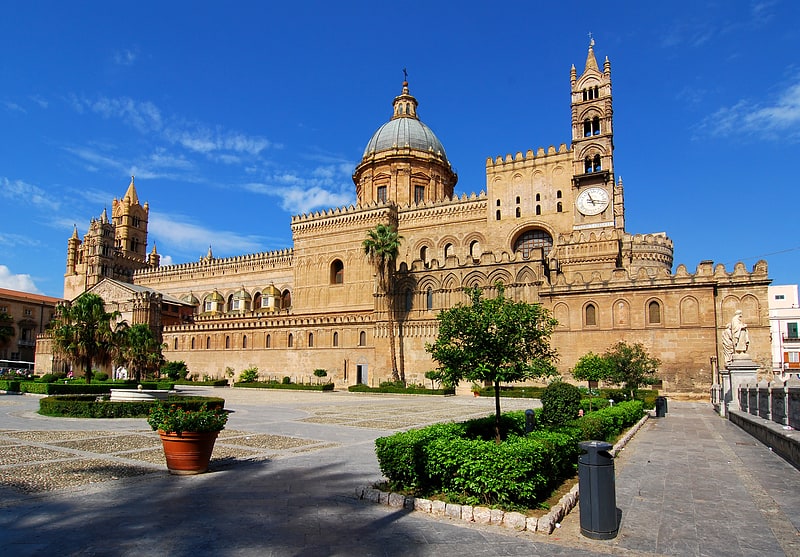
Also known as: Cattedrale di Palermo
12th-century structure with royal tombs. Palermo Cathedral is the cathedral church of the Roman Catholic Archdiocese of Palermo, located in Palermo, Sicily, southern Italy. It is dedicated to the Assumption of the Virgin Mary. As an architectural complex, it is characterized by the presence of different styles, due to a long history of additions, alterations and restorations, the last of which occurred in the 18th century.[1]
Address: Via Vittorio Emanuele, 90040 Palermo (Centro Storico)
Palazzo dei Normanni
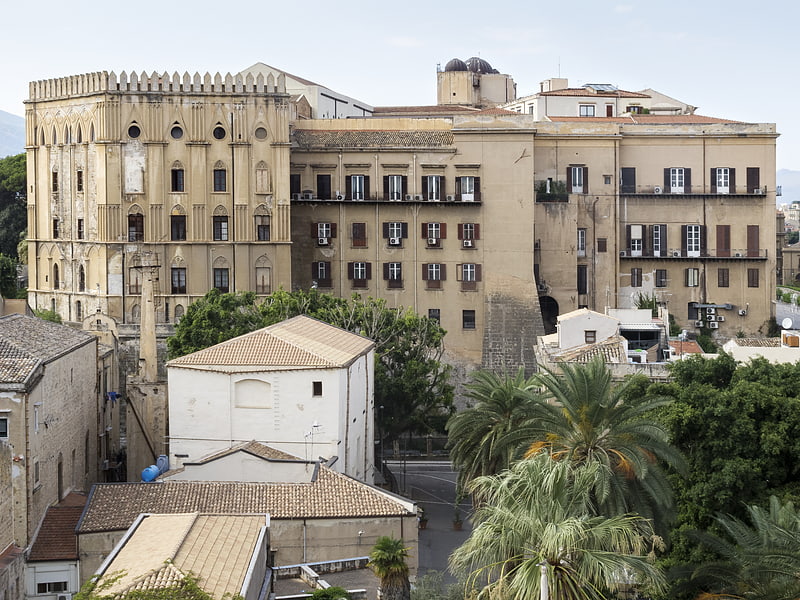
Ornate 9th century palace and museum. The Palazzo dei Normanni or Royal Palace of Palermo is a palace in Palermo, Italy. It was the seat of the Kings of Sicily with the Hauteville dynasty and served afterwards as the main seat of power for the subsequent rulers of Sicily. Since 1946 it has been the seat of the Sicilian Regional Assembly. The building is the oldest royal residence in Europe; and was the private residence of the rulers of the Kingdom of Sicily and the imperial seat of Frederick II and Conrad IV.[2]
Address: 1 Piazza del Parlamento, Palermo (Centro Storico)
Cappella Palatina
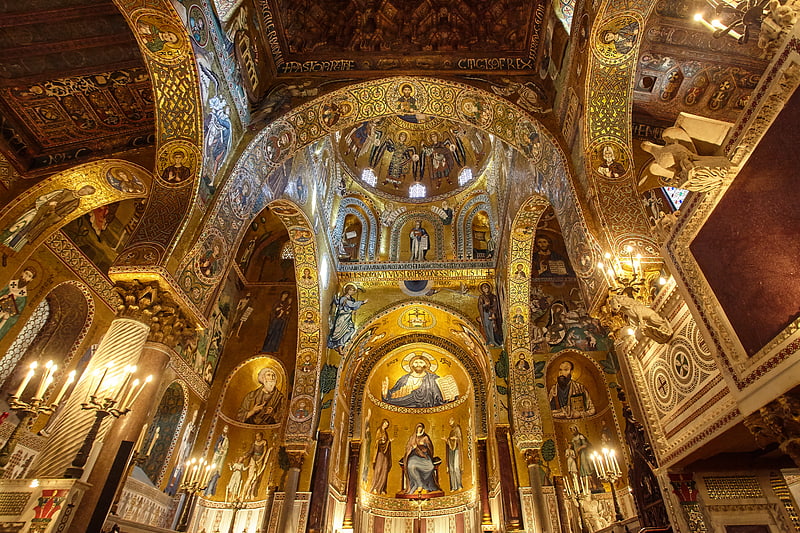
Church famous for its mosaic works. The Palatine Chapel is the royal chapel of the Norman Palace in Palermo, Sicily. This building is a mixture of Byzantine, Norman and Fatimid architectural styles, showing the tricultural state of Sicily during the 12th century after Roger I and Robert Guiscard conquered the island.
Also referred to as a Palace church or Palace chapel, it was commissioned by Roger II of Sicily in 1132 to be built upon an older chapel (now the crypt) constructed around 1080. It took eight years to build, receiving a royal charter the same year, with the mosaics being only partially finished by 1143. The sanctuary, dedicated to Saint Peter, is reminiscent of a domed basilica. It has three apses, as is usual in Byzantine architecture, with six pointed arches (three on each side of the central nave) resting on recycled classical columns. The muqarnas ceiling of the nave and the chapel's rectilinear form show the Fatimid influence in the building's construction[3]
Address: Piazza del Parlamento, 90131 Palermo (Centro Storico)
Church of Santa Maria dell'Ammiraglio
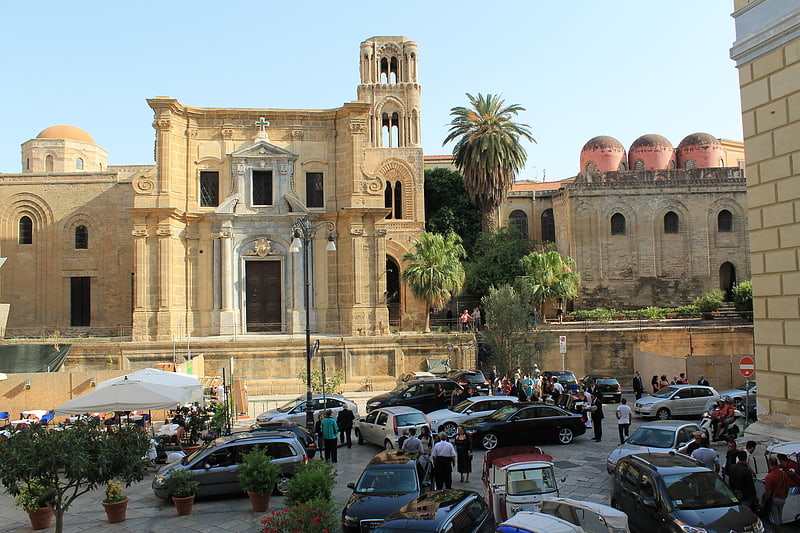
Also known as: Chiesa della Martorana
Vibrant Byzantine mosaics in 1143 church. The Church of St. Mary of the Admiral, also called Martorana, is the seat of the Parish of San Nicolò dei Greci, overlooking the Piazza Bellini, next to the norman church of San Cataldo, and facing the Baroque church of Santa Caterina in Palermo, Sicily, southern Italy.
The church is a Co-cathedral to the Eparchy of Piana degli Albanesi of the Italo-Albanian Catholic Church, a diocese which includes the Italo-Albanian (Arbëreshë) communities in Sicily who officiate the liturgy according to the Byzantine Rite in the Ancient Greek language and Albanian language The Church bears witness to the Eastern religious and artistic culture still present in Italy today, further contributed by the Albanian exiles who took refuge in southern Italy and Sicily from the 15th century under the pressure of Turkish-Ottoman persecutions in Albania and the Balkans. The latter influence has left considerable traces in the painting of icons, in the religious rite, in the language of the parish, in the traditional customs of some Albanian colonies in the province of Palermo. The community is part of the Catholic Church, but follows the ritual and spiritual traditions that largely share it with the Eastern Orthodox Church.
The church is characterized by the multiplicity of styles that meet, because, with the succession of centuries, it was enriched by various other tastes in art, architecture and culture. Today, it is, in fact, as a church-historical monument, the result of multiple transformations, also subject to protection.
Since 3 July 2015 it has been part of the UNESCO World Heritage Site known as Arab-Norman Palermo and the Cathedral Churches of Cefalù and Monreale.[4]
Address: Piazza Bellini, 3, 90133 Palermo (Centro Storico)
Chiesa di San Cataldo

12th-century church with 3 red domes. The Church of San Cataldo is a Catholic church located at Piazza Bellini in central Palermo, Sicily, Italy. Erected in 1154 as a notable example of the Arab-Norman architecture which flourished in Sicily under Norman rule on the island, the church is annexed to that of Santa Maria dell'Ammiraglio. Since the 1930s, it belongs to the Order of the Holy Sepulchre.
In 2015, it received status as a World Heritage Site.[5]
Address: Piazza Bellini, 1, 90133 Palermo (Centro Storico)
Quattro Canti
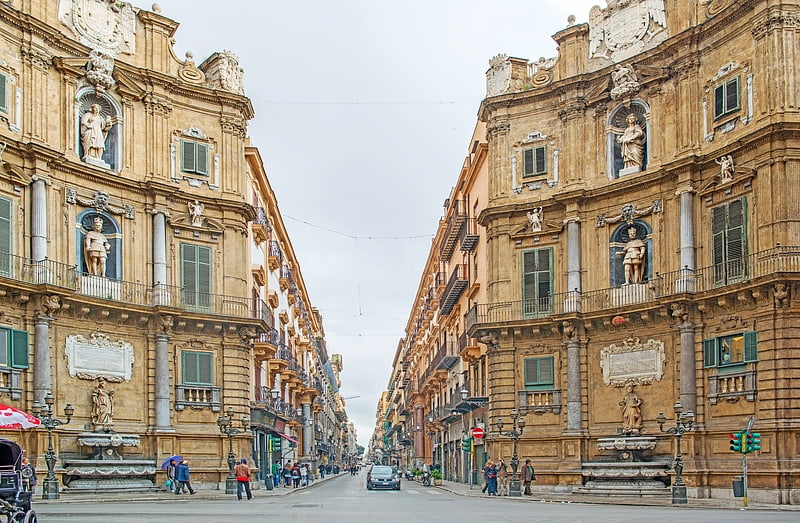
Grand square with symmetrical fountains. Quattro Canti, officially known as Piazza Vigliena, is a Baroque square in Palermo, region of Sicily, Italy; it is considered the center of the historic quarters of the city. The site is the intersection of two major streets in Palermo, the Via Maqueda and the Corso Vittorio Emanuele, and at this intersection are the corners of all four of the ancient quarters of Palermo: the Kalsa; Seralcadi; Albergaria; and Castellammare. On the southwest corner stands the church of San Giuseppe dei Padre Teatini. A few steps away along the flank of this church, behind the Southeast corner building, along Via Maqueda is the Piazza and Fontana Pretoria, sandwiched between this church and Santa Caterina. A few more steps reaches San Cataldo and the ancient Norman church of La Martorana. About 500 meters west along the Cassaro is the piazza of the Cathedral of Palermo and the adjacent Palazzo Normani.[6]
Address: Corso Vittorio Emanuelle, 90100 Palermo (Centro Storico)
Fontana Pretoria

Fountain in Palermo, Italy. The Praetorian Fountain is a monumental fountain located in Piazza Pretoria in the historic center of Palermo, region of Sicily, Italy. The fountain dominates the piazza on the west flank of the church of Santa Caterina, and is one block south of the intersection of the Quattro Canti. The fountain was originally built in 1544 in Florence by Francesco Camilliani, but was sold, transferred, and reassembled in Palermo in 1574.[7]
Address: Piazza Pretoria, Palermo (Centro Storico)
Palazzo Alliata di Villafranca
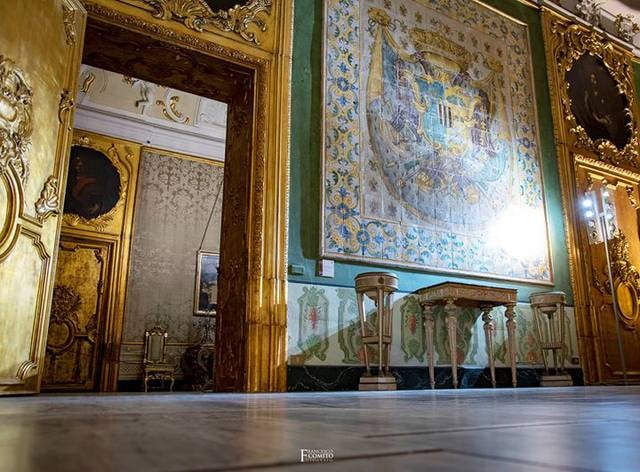
Museum in Palermo, Italy. The Palazzo Alliata di Villafranca is former aristocratic mansion, now converted into a museum, located just off Via Vittorio Emanuele facing the Piazza Bologni which opens two blocks west of the Quattro Canti intersection, in the ancient quarter of the Albergaria of the city of Palermo, region of Sicily, Italy.[8]
Address: Piazza Bologni, 20, 90134 Palermo (Centro Storico)
Regional Archeological Museum Antonio Salinas
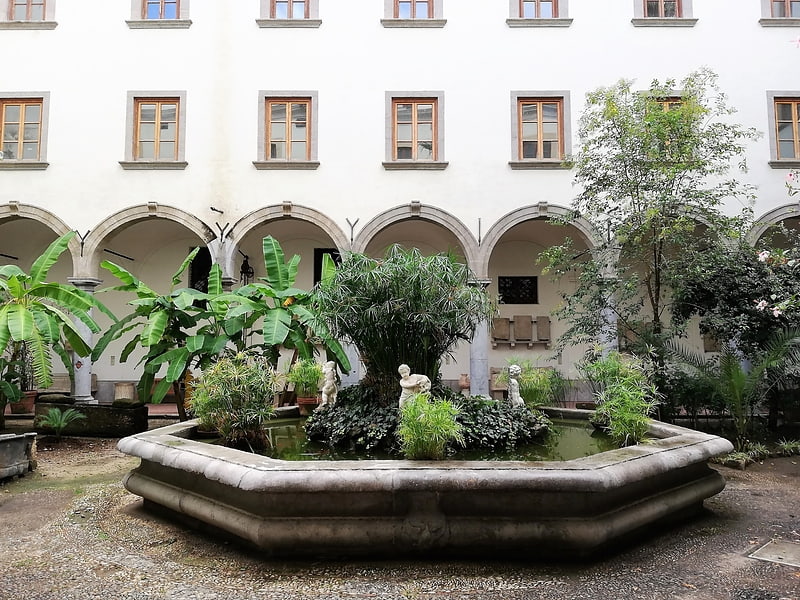
Also known as: Museo archeologico regionale Antonio Salinas
Phoenician and ancient Greek art exhibits. The Antonino Salinas Regional Archeological Museum is a museum in Palermo, Italy. It possesses one of the richest collections of Punic and Ancient Greek art in Italy, as well as many items related to the history of Sicily. Formerly the property of the Oratory of Saint Philip Neri, the museum is named after Antonino Salinas, a famous archaeologist and numismatist from Palermo who had served as its director from 1873 until his death in 1914, upon which he left it his major private collection. It is part of the Olivella monumental complex, which includes the Church of Sant'Ignazio all'Olivella and the adjoining Oratory.[9]
Address: Piazza Olivella, 24, 90133 Palermo (Centro Storico)
San Giovanni degli Eremiti
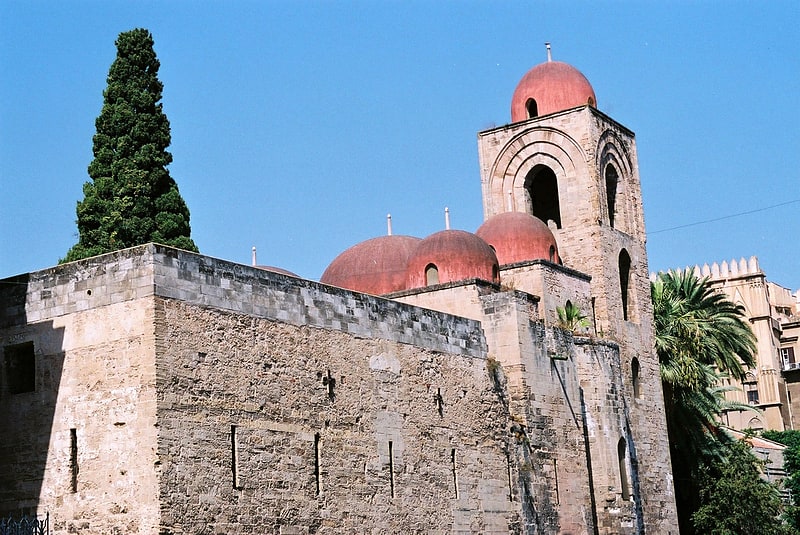
Medieval church with striking red domes. San Giovanni degli Eremiti is an ancient former monastic church located on Via Benedettini #19 in the ancient quarter of Albergaria of the city of Palermo, region of Sicily, Italy. It is about two blocks south from the Palazzo dei Normanni, adjacent to the church of San Giorgio in Kemonia. While the interior is virtually devoid of decoration or furnishings, the red Norman-Byzantine domes, the medieval cloister ruins, and garden make this small church a symbol of ancient Palermo.[10]
Address: Via dei Benedettini, 16, 90134 Palermo (Centro Storico)
Palazzina Cinese
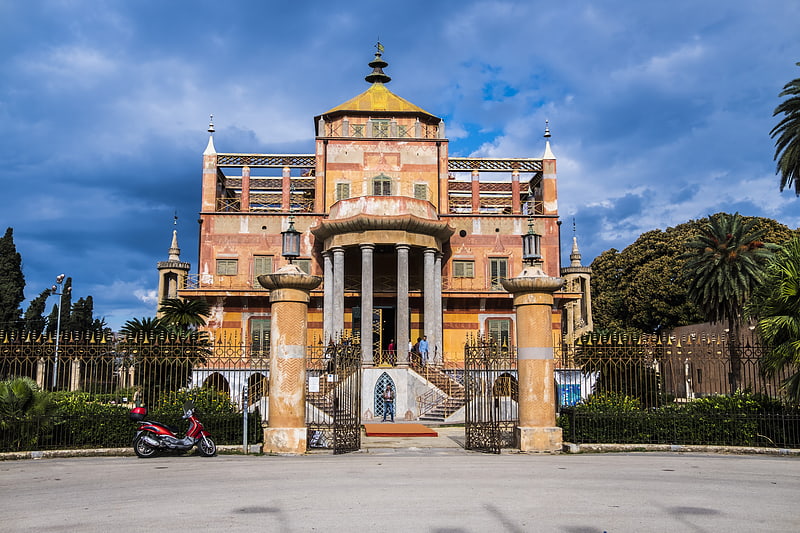
Palace in Palermo, Italy. The Chinese Palace, also known as Real Casina alla Cinese, is a former royal residence of the House of Bourbon-Two Sicilies designed in the style of Chinoiserie. It is located in Palermo, inside the park of La Favorita. The Ethnographic Museum of Sicily, named after Giuseppe Pitrè, is located in one of the Palace's guesthouse.[11]
Address: Viale Duca Degli Abruzzi 1, 90146 Palermo (VII Circoscrizione)
Catacombe dei Cappuccini
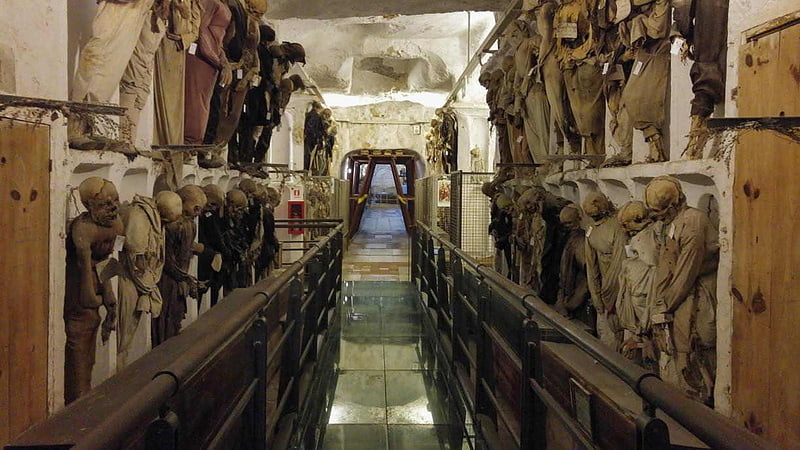
Burial chamber with mummies and skeletons. The Capuchin Catacombs of Palermo are burial catacombs in Palermo, Sicily, southern Italy. Today they provide a somewhat macabre tourist attraction as well as an extraordinary historical record.[12]
Address: Piazza Cappuccini 1, 90129 Palermo (IV Circoscrizione)
Santa Caterina

Catholic church in Palermo, Italy. Santa Caterina d'Alessandria or Saint Catherine of Alexandria is a Roman Catholic church with a main facade on Piazza Bellini, and a lateral Western facade facing the elaborate Fontana Pretoria, in the historic quarter of Kalsa in the city of Palermo, region of Sicily, Italy. In front of the main facade, across the piazza Bellini, rise the older churches of San Cataldo and Santa Maria dell'Ammiraglio, while across Piazza Pretoria is the Theatine church of San Giuseppe and the entrance to the Piazza of Quattro Canti. Refurbished over the centuries, the church retains elements and decorations from the Renaissance, Baroque, and late-Baroque eras. This church is distinct from the Oratorio di Santa Caterina found in the Olivella neighborhood.[13]
Address: Piazza Bellini, 2, 90133 Palermo (Centro Storico)
Villa Giulia
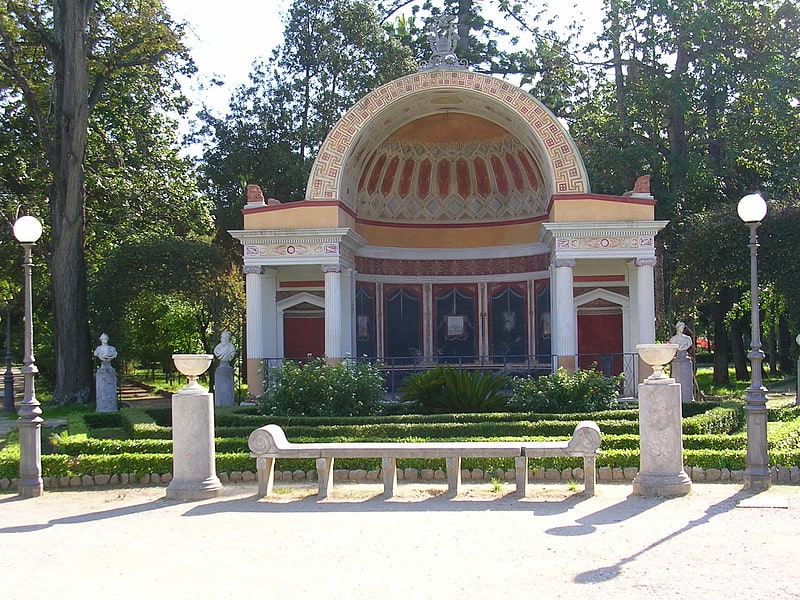
The Villa Giulia, also known as Villa del Popolo, and as Villa Flor is a urban public park, lying to the east of the Botanical Garden of Palermo, in the region of Sicily, Italy.[14]
Address: Via Lincoln, 90123 Palermo (III Circoscrizione)
Zisa
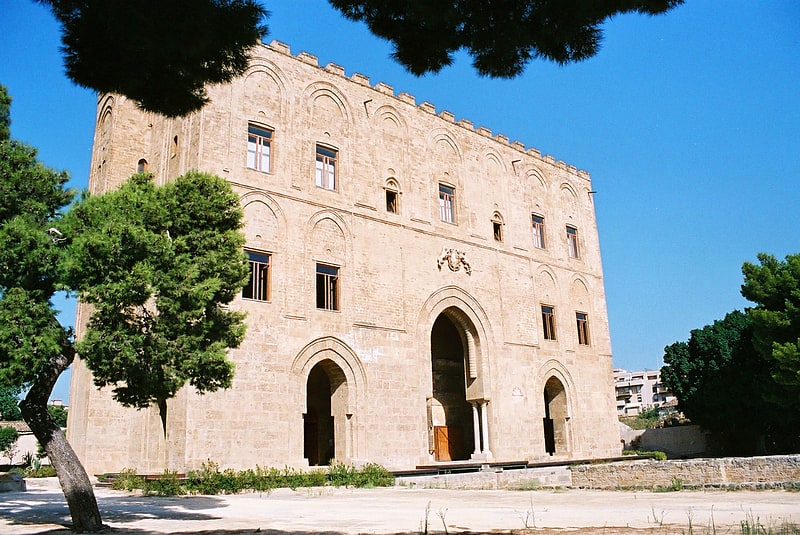
Restored remains of a Moorish palace. The Zisa is alternatively listed as either a castle or palace, and located in the western area of Palemo, region of Sicily, Italy. The edifice was begun around 1165 by an Moorish craftsman under the rule of the Norman conquerer of Sicily, king William I of Sicily. It was not finished until 1189 was under the rule of William II. It is presently open to the public for tours.
The name Zisa derives from the Arab term al-Azīz, meaning "dear" or "splendid". The same word, in Naskh script, is impressed in the entrance, according to the usual habit for the main Islamic edifices of the time. The structure was conceived as a summer residence for the Norman kings, as a part of the large hunting resort known as Genoardo (Arabic: Jannat al-arḍ, literally "Earthly Paradise") that included also the Cuba Sottana, the Cuba Soprana and the Uscibene palace, and extensive gardens, of which no traces remain. Joan of England, Queen of Sicily, widow of William II, was confined to the palace by the new king Tancred of Sicily due to her backing Princess Constance aunt of William II to ascend the throne.
At the end of the 15th century the building fell into disrepair while in private hands. In 1635, a new owner, Giovanni de Sandoval, cousin to the Viceroy of Sicily, acquired the palace for free due to its poor state. The palace remained in the hands of the Sandoval family until 1808, when it was eventually fell again to ruin once again. From 1808 to the 1950s the building was used a residence by the princes Notarbartolo di Sciara. In the 1990s, the building was picked up for restoration by the Region of Scallia. In July 2015 it was included in the UNESCO Arab-Norman Palermo and the Cathedral Churches of Cefalù and Monreale World Heritage Site.[15]
Address: Piazza Zisa, 90135 Palermo (V Circoscrizione)
Palazzo Pretorio
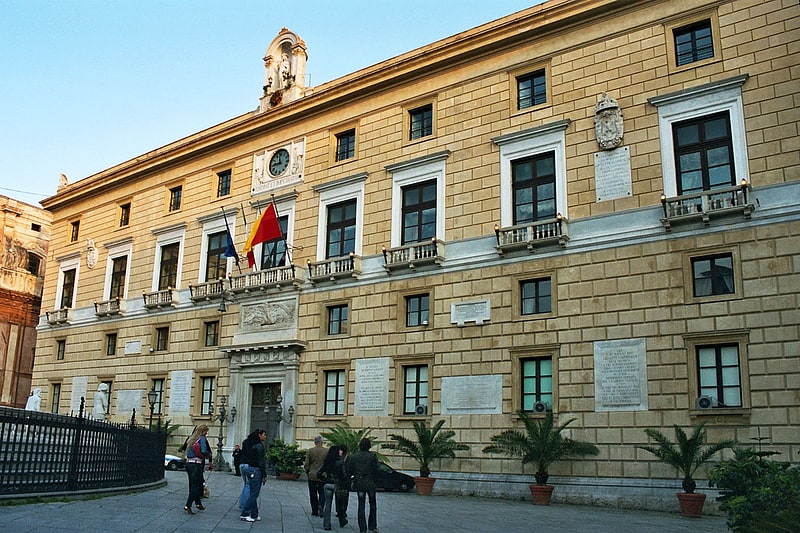
City or town hall in Palermo, Italy. The Praetorian Palace, also known as Palace of the Eagles, is a palace of Palermo. The building has an important role in the political life of the city, since it houses the mayor and the offices of the municipality of Palermo. It is located in the heart of the historic centre, between Via Maqueda, Piazza Pretoria and Piazza Bellini, in the same area of other well-known architectural landmarks like the Fontana Pretoria, the Baroque church of Santa Caterina and the Medieval churches of Martorana and San Cataldo.[16]
Address: Piazza Pretoria, Palermo (Centro Storico)
Villa Palagonia
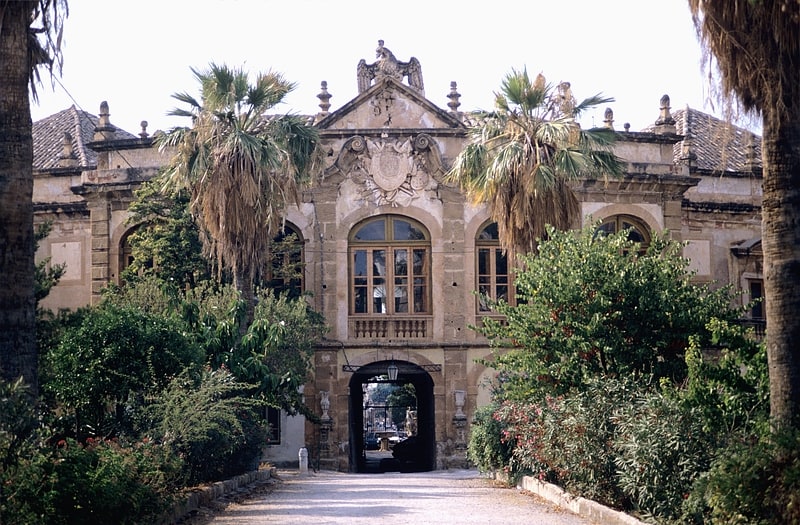
Estate decked with statues of monsters. The Villa Palagonia is a patrician villa in Bagheria, 15 km from Palermo, in Sicily, southern Italy. The villa itself, built from 1715 by the architect Tommaso Napoli with the help of Agatino Daidone, is one of the earliest examples of Sicilian Baroque. However, its popularity comes mainly from the statues of monsters with human faces that decorate its garden and its wall, and earned it the nickname of "The Villa of Monsters".
This series of grotesques, created from 1749 by Francesco Ferdinando II Gravina, Prince of Palagonia, aroused the curiosity of the travellers of the Grand Tour during the 18th and 19th centuries, for instance Henry Swinburne, Patrick Brydone, John Soane, Goethe, the Count de Borde, the artist Jean-Pierre Houël or Alexandre Dumas, prior to fascinate surrealists like André Breton or contemporary authors such as Giovanni Macchia and Dominique Fernandez, or the painter Renato Guttuso.
In 1885, the villa was bought by private individuals, who are still in its possession, and is partially open to the public.
Villa Palagonia has been one of the venues for music concerts held within the framework of the Concert Season of Bagheria (Stagione Concertistica Città di Bagheria) initiative since 2017, with free entrance.[17]
Address: Piazza Garibaldi, Palermo
La Magione
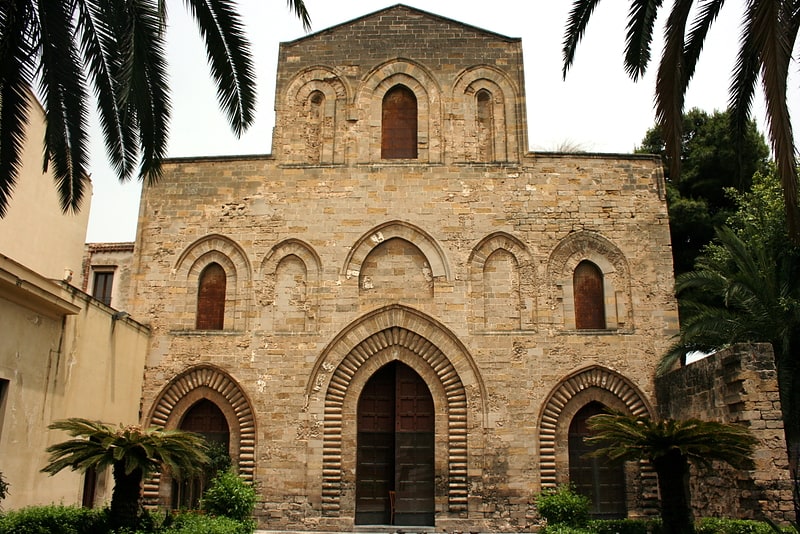
Also known as: Basilica della Santissima Trinità del Cancelliere
Catholic church in Palermo, Italy. La Magione is a 12th-century Norman-Gothic architecture, Roman Catholic Basilica church, located on Via Magione #44, the entrance to the facade, which faces southeast, is through a garden path midway between via Castrofilippo and Via Giuseppe Garibaldi, in the ancient quarter of Kalsa of Palermo, region of Sicily, Italy. The apse of the church is on the southeast corner of Piazza Magione.[18]
Address: Piazza Magione, 1, 90133 Palermo (Centro Storico)
San Francesco d'Assisi
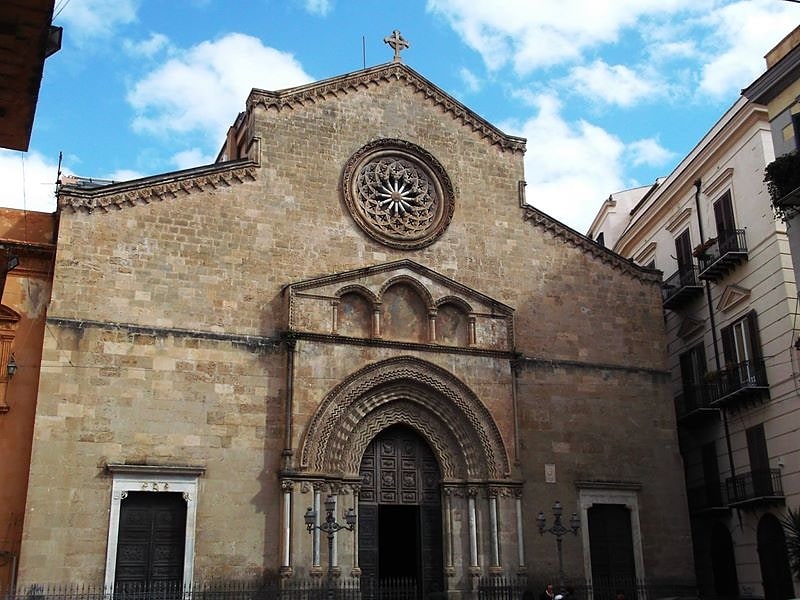
Building in Palermo, Italy. The Church of Saint Francis of Assisi is a Gothic-style, Roman Catholic church of Palermo. It is located near a major and ancient street of the city, via Cassaro, in the quarter of the Kalsa, within the historic centre of Palermo. The building represents the main Conventual Franciscan church of Sicily, and has the title of minor basilica.[19]
Address: Via del Parlamento, 32, 90133 Palermo (Centro Storico)
Porta Nuova
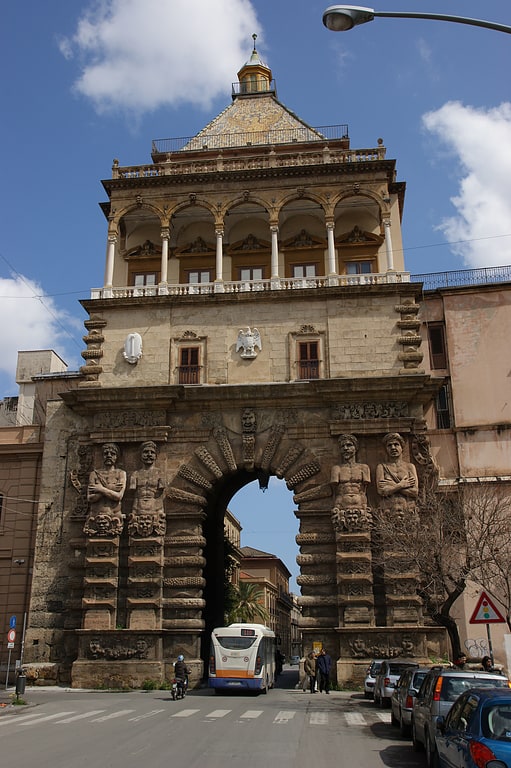
Historical landmark in Palermo, Italy. Porta Nuova is a monumental city gate of Palermo. It represents the entrance of the Cassaro from Corso Calatafimi and is located beside Palazzo dei Normanni, royal palace of Palermo. The gate was built to celebrate Charles V's conquest of Tunis and his visit to the capital of the Kingdom of Sicily.[20]
Address: Via Vittorio Emanuele, Palermo (Centro Storico)
Orto botanico di Palermo
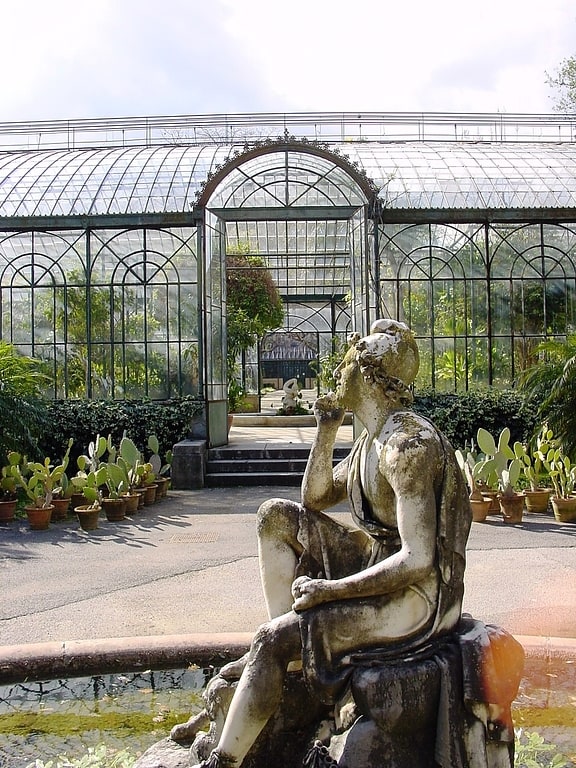
Botanical garden in Palermo, Italy. The Orto Botanico di Palermo is both a botanical garden and a research and educational institution of the Department of Botany of the University of Palermo. The garden lies within the city of Palermo, Italy at 10 m above sea-level. It covers about 0.12 km2 on top of red soil that has evolved on a limestone tuff substratum.[21]
Address: Via Lincoln 2/A, 90133 Palermo (III Circoscrizione)
Teatro Politeama Garibaldi

Also known as: Teatro Politeama
Performing arts theater in Palermo, Italy. The Politeama Theatre is a theatre of Palermo. It is located in the central Piazza Ruggero Settimo and represents the second most important theatre of the city after the Teatro Massimo. It houses the Orchestra Sinfonica Siciliana.[22]
Address: Palermo, Piazza Ruggero Settimo, 15
Teatro Massimo
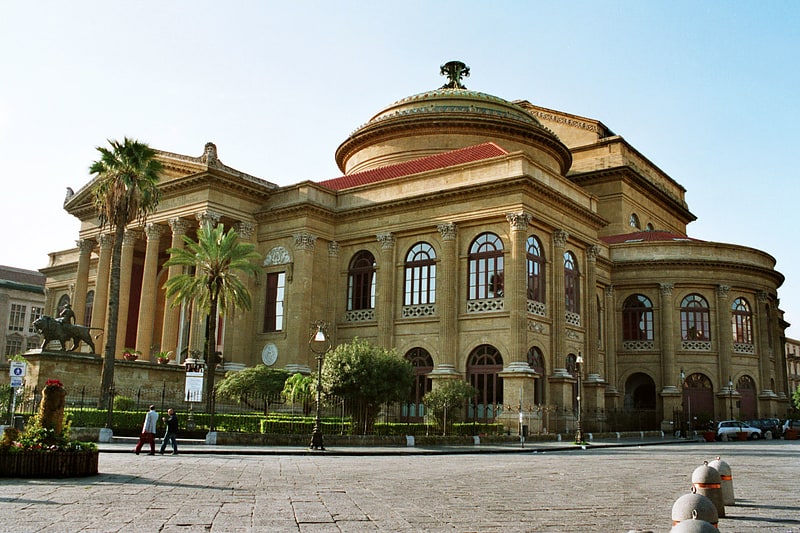
Opera house known for its acoustics. The Teatro Massimo Vittorio Emanuele is an opera house and opera company located on the Piazza Verdi in Palermo, Sicily. It was dedicated to King Victor Emanuel II. It is the biggest in Italy, and one of the largest of Europe, renowned for its perfect acoustics.[23]
Address: Palermo, Piazza Verdi
Chiesa del Gesù
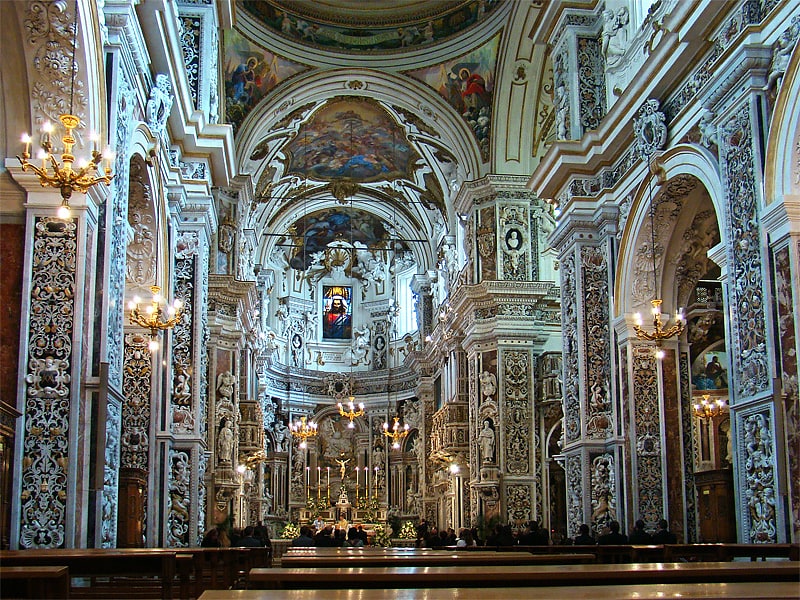
17th-century church with baroque design. The Church of the Gesù, known also as the Saint Mary of Jesus or the Casa Professa, is a Baroque-style, Roman Catholic church established under the patronage of the Jesuit order, and located at Piazza Casa Professa 21 in Palermo, region of Sicily, Italy.[24]
Address: Piazza Casa Professa, 21, 90134 Palermo (Centro Storico)
Cuba Palace
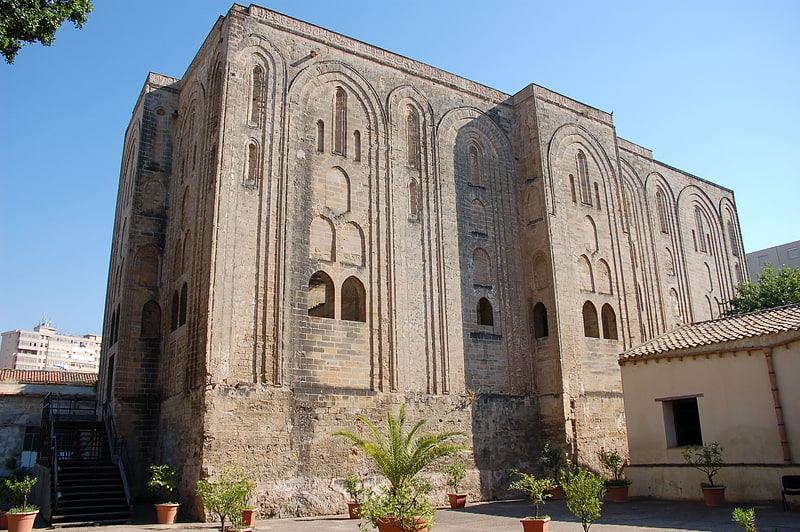
Also known as: Palazzo della Cuba
12th-century pavilion and necropolis. The Cuba is a palace in the Sicilian city of Palermo. It was built in 1180 by William II of Sicily in his great Royal Park, as his personal recreation pavilion, together with an artificial lake: it shows strong Fatimid art influences, as it was designed and decorated by Arab artists still living in Palermo after the Norman conquest in 1072. During the rule of Bourbon kings of Naples it was annexed to a barracks. In the 16th century it was turned into a lepers' colony.
The edifice has a rectangular plan, with massive forms. The four façades are marked by blind arcades, small windows, and niches. The name Cuba derives in fact from its approximately cubical form. The famous Italian Middle Ages author Boccaccio was impressed by the Cuba and set here one of the novellas included in the Decameron.
The Cubola or Little Cuba is another edifice built by William II for his park, in smaller dimensions. The most striking feature of the Cubola is the little hemi-spherical cupola.
This place has nothing to do with the island country in the Caribbean.[25]
Address: Corso Calatafimi 100, 90129 Palermo (IV Circoscrizione)
Piazza Bellini
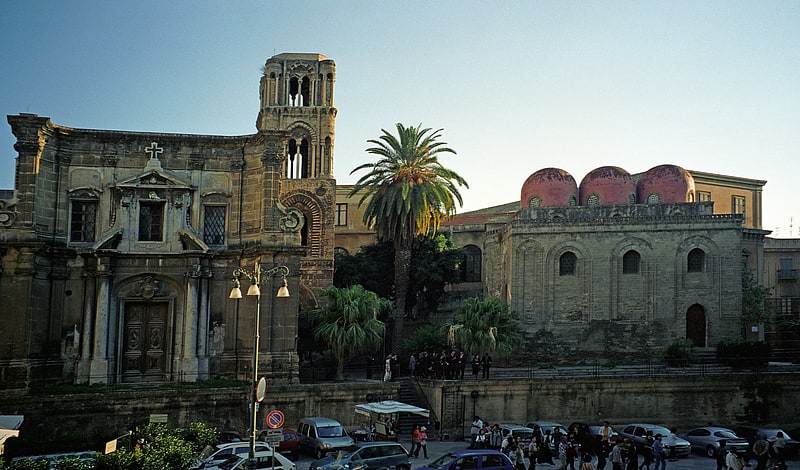
Piazza Bellini is a square of Palermo. It is located in the heart of the city, near the central Via Maqueda and Piazza Pretoria, in the quarter of the Kalsa, within the historic centre of Palermo.
In its perimeter are located two buildings dating back to the era of Norman Sicily: the churches of Martorana and San Cataldo (both are UNESCO World Heritage Sites as part of Arab-Norman Palermo and the Cathedral Churches of Cefalù and Monreale). In the square are also located the Baroque church of Santa Caterina, the Bellini Theatre and the posterior facade of Palazzo Pretorio, headquarters of the Comune of Palermo. Moreover, in the square some ruins of Punic walls are visible. Near the square, in Via Maqueda, has its location the Faculty of Jurisprudence.[26]
San Giuseppe dei Teatini
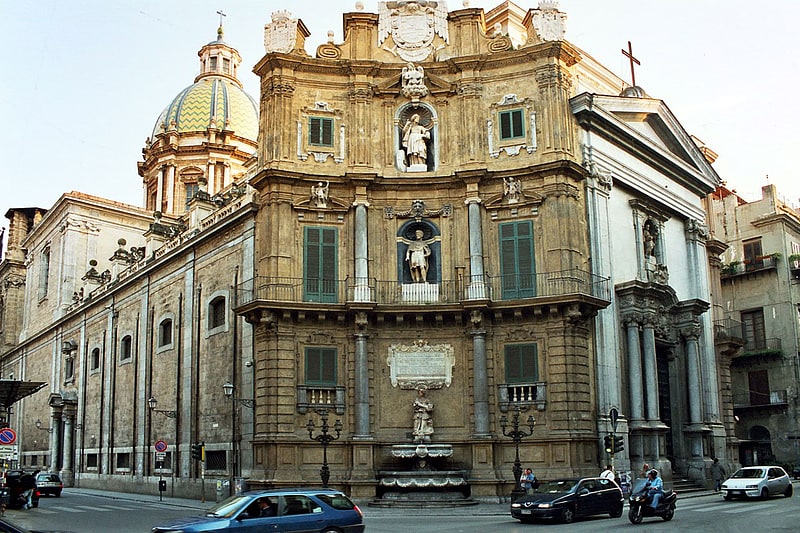
Grand Sicilian Baroque Catholic church. San Giuseppe dei Teatini is a Roman Catholic church on via Vittorio Emanuele, at the southwest corner of the Quattro Canti, in the historic center of the city of Palermo, region of Sicily, Italy. The east flank of the nave faces the Fontana Pretoria, across the piazza from Santa Caterina. San Giuseppe is an example of the Sicilian Baroque in Palermo.[27]
Address: Via Vittorio Emanuele, 311, 90134 Palermo (Centro Storico)
Piazza Pretoria
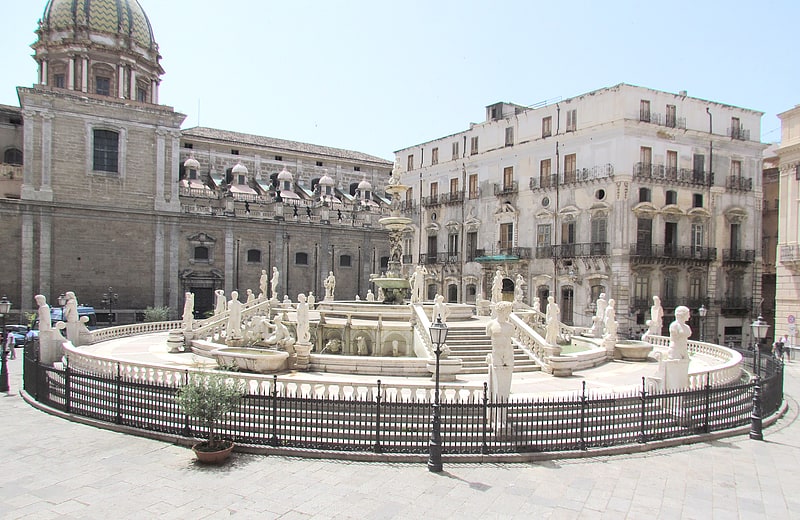
Piazza Pretoria, also known as square of Shame, is at the limits of the district of Kalsa, near the corner of Cassaro with Via Maqueda, just a few meters from the Quattro Canti, the intersection where all the four ancient quarters intersect, in the city of Palermo, region of Sicily, Italy.[28]
Address: Piazza Pretoria, Palermo (Centro Storico)
Santa Maria della Catena

Catholic church in Palermo, Italy. Santa Maria della Catena is a Roman Catholic church located in the Piazza Dogana, now sandwiched between Strada Statale 113 and Via Vittorio Emanuele, located in the harbor-hugging quarter of Castellammare in Palermo, region of Sicily, Italy.[29]
Address: Piazza Marina, 90133 Palermo (Centro Storico)
Ponte dell'Ammiraglio
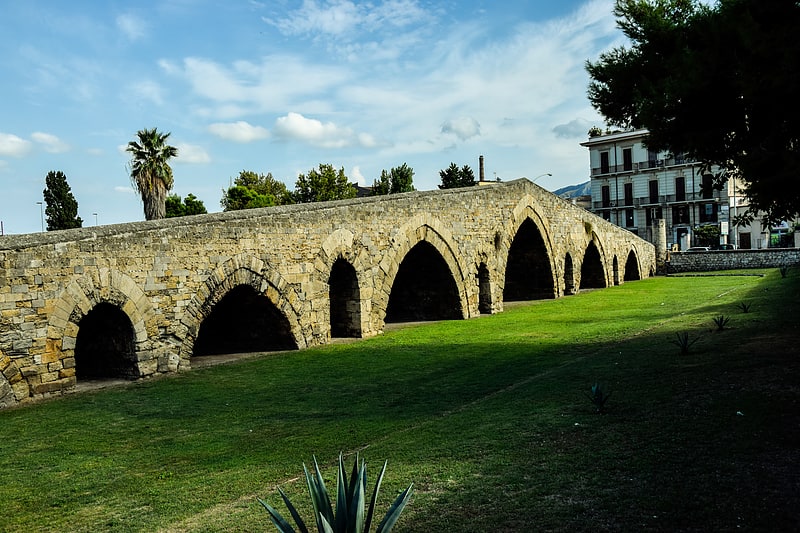
Bridge in Palermo, Italy. The Admiral's Bridge is a medieval bridge of Palermo, located in Piazza Scaffa. It was built over the Oreto River during the era of the Norman Sicily by the ammiratus ammiratorum George of Antioch. In 2015, it became a UNESCO World Heritage Site as part of a series of nine civil and religious structures inscribed as Arab-Norman Palermo and the Cathedral Churches of Cefalù and Monreale.[30]
Address: Corso dei Mille, 90123 Palermo (II Circoscrizione)
Modern Art Gallery Sant'Anna
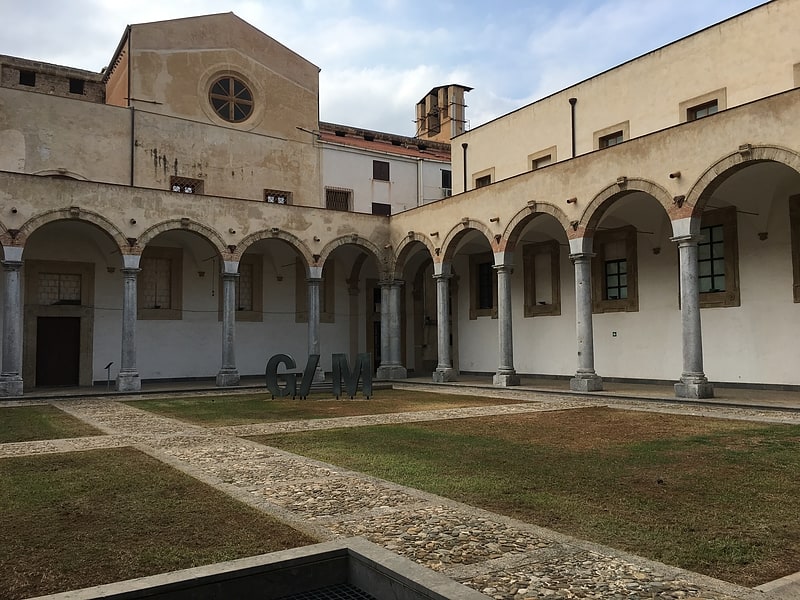
Also known as: Galleria d'arte moderna Sant'Anna
Museum in Palermo, Italy. The Modern Art Gallery of Palermo is a civic art gallery of Palermo, displaying works from the 19th until the early 20th century, located on Via Sant'Anna #21, adjacent to the church of Sant'Anna la Misericordia in the ancient quarter of the Kalsa of the city of Palermo, region of Sicily, Italy. The collections were moved to this site, consisting of the former Franciscan convent associated with Sant'Anna and the adjacent Palazzo Bonet.[31]
Address: Via Sant'Anna, 21, 90133 Palermo (Centro Storico)
Piazza Castelnuovo
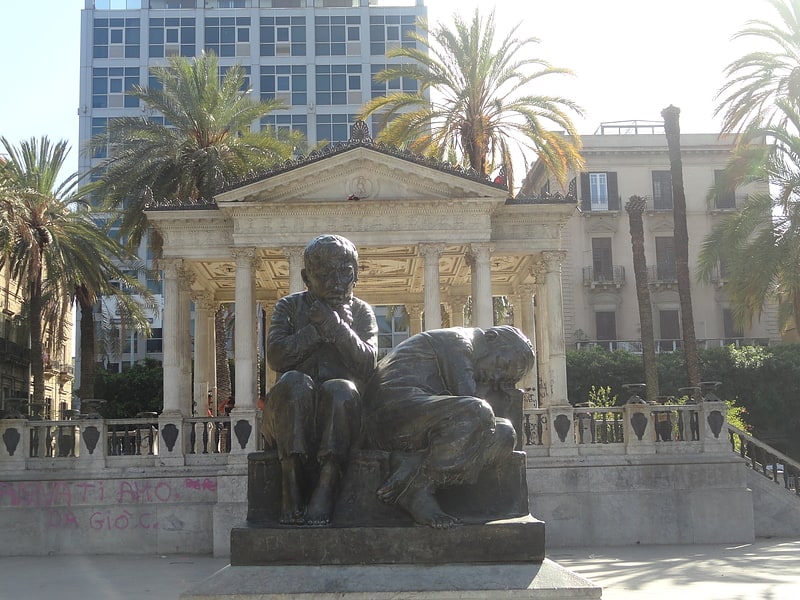
Piazza Castelnuovo is a square of Palermo. Along with the contiguous Piazza Ruggero Settimo, it forms a single urban space, commonly called Piazza Politeama, by virtue of the presence of Teatro Politeama, the second most important theatre of the city after Teatro Massimo. The square is located between Via Ruggero Settimo, Viale della Libertà and Via Dante, near the historic centre of Palermo, and represents one of the most popular city's square.
On Piazza Castelnuovo are located a structure called "Palchetto della Musica" (work of Salvatore Valenti), the monument to Carlo Cottone (work of Giovan Battista Palazzotto and Domenico Costantino), the sculptures "Nautica" (work of Mario Rutelli), "Lavoro" (work of Benedetto Civiletti) and "Senzatetto" (work of Pasquale Civiletti).
The square is named after Carlo Cottone, prince of Castelnuovo, one of the advocate of the Sicilian Constitution of 1812.[32]
Palazzo Abatellis
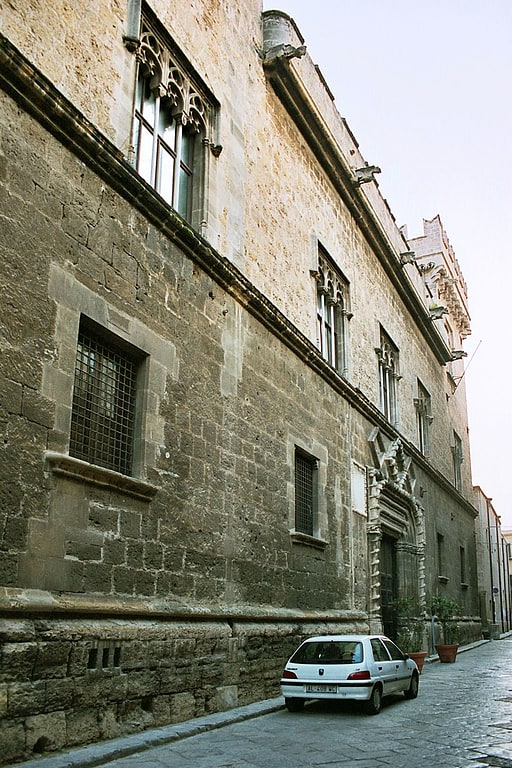
Renaissance art in a 15th-century palace. Palazzo Abatellis is a palazzo in Palermo, Sicily, southern Italy, located in the Kalsa quarter. It is home to the Galleria Regionale della Sicilia, the Gallery of Art for the Sicilian region.[33]
Address: Via Alloro, 4, 90133 Palermo (Centro Storico)
Mount Pellegrino
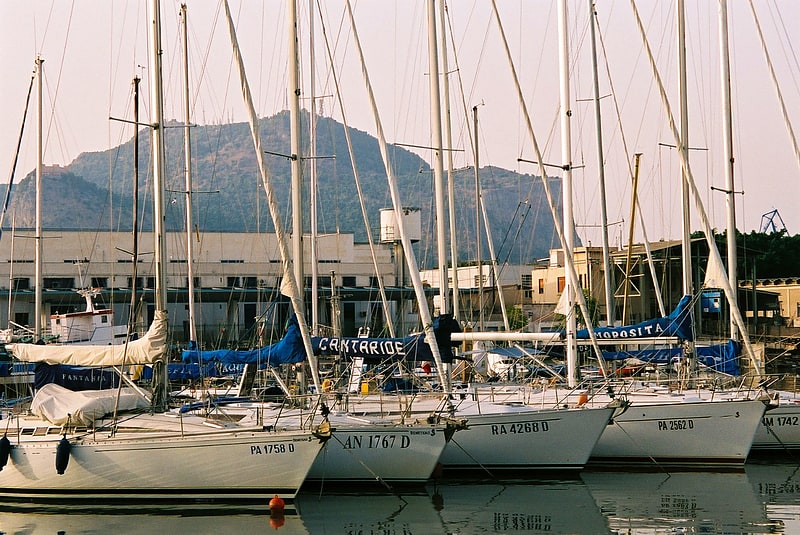
Also known as: Monte Pellegrino
Hill with a unusual cave shrine. Mount Pellegrino is a hill facing east on the bay of Palermo, Sicily, southern Italy, located north of the city.
It is 606 metres (1,970 ft) high with panorama views of the city, its surrounding mountains and the Tyrrhenian Sea. In his book Travels in Italy, Goethe described Monte Pellegrino as the most beautiful promontory in the world.
The mountain is home to the Santuario di Santa Rosalia, venerating a patron saint of Palermo. Separate is a seashore facing belvedere with a Statue of Santa Rosalia.
In addition, the paleolithic grafitti of the Grotta dell'Addaura were found on this mountain in 1943, but the site is no longer accessible.
From Palermo, is visible the pink Castello Utveggio on a lower promontory.[34]
Parco della Favorita
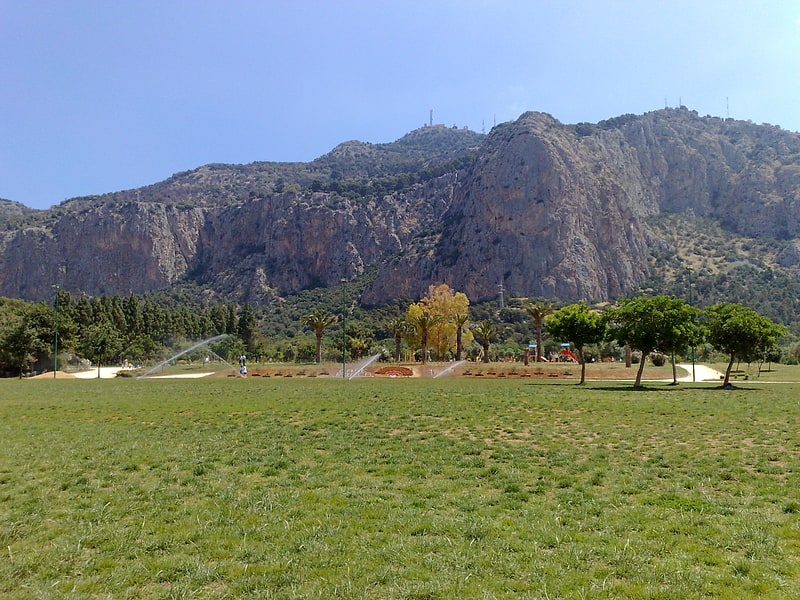
Park in Palermo, Italy. La Favorita Park is a large city park in Palermo, Italy. Established in 1799 by Ferdinand III of Sicily, it has an overall area of 400 hectares, and represent the biggest green area of Palermo. It is located at the foot of Monte Pellegrino, in the north-western part of the city.[35]